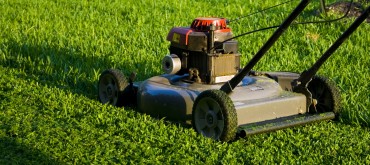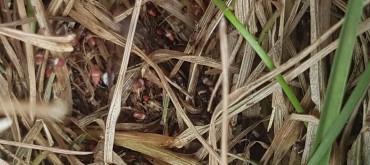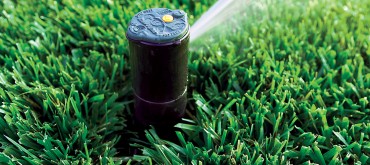As we start to approach more summer like weather with higher humidity levels, we need to start thinking more about when our lawns require water. It is important to remember that the goal is to create the best environment for your lawn that promotes a greener, healthier looking landscape, and avoids any favourable conditions for things like weeds and disease. There are many different types of disease stressors that are present throughout different times of the year that have the power to put your lawn to the test.
In order for a disease to develop on a lawn it requires three key factors; a host, a pathogen, and a favourable environment. The best defense to preventing the given pathogen from developing is to take away the favourable environment piece. Diseases favor darkness, high moisture levels, and weak competition. That being said, it is important to ensure your waterings are spread out, no more than twice a week, and are not performed before dark. It takes as little as two hours for a disease to develop if your lawn lies still and damp under the cover of night’s darkness. Alongside that aspect we also need to consider mowing. Mowing is a type of mechanical stressor that causes slight injury to all the leaf tips automatically making them more susceptible to a disease. Ever wonder why you hear your neighbour cutting their lawn early in the morning? Mowing just prior to the overnight hours can put your lawn at a higher risk of infections, as well as increased moisture due to the fresh mower injury to the leaf tips that were unable to heal before darkness set in. Another beneficial tip when it comes to proper mowing, if you start to see disease develop anywhere it is beneficial to wash your mower in between cuts to help prevent further spread.
Among these disease stressors weather is a big one, as there are a number of common ones that appear throughout different times of the year. Coming out of a winter dormancy you may experience white fungus or snow mold, whereas moving into early spring weather, it is important to look out for leaf spots and powdery mildew. As we make our way into more of a warmer season, summer patches, brown spots, drought stress, and dollar spots may start to become visible. These all have a direct correlation to how your lawn is being watered. A helpful tip to see if your lawn is irrigated properly is watching the grass blades as you walk on them. If they do not spring back up it is time to adjust your watering schedule or your sprinkler coverage. The good news with turfgrass diseases is that warm weather disease will not grow in cool weather and vice versa, so if the temperature changes when a disease is active the damage will stop.
The best defense whenever you suspect disease activity to be associated with some injury is to revisit your watering and mowing practises to ensure you are caring for the lawn properly. We want to minimize the stress we introduce to the lawn and ensure we work to avoid creating favourable disease environments. Water deeply and infrequently, cut high regularly, and avoid any evening practises whenever possible.
If you have any further questions or additional curiosity about diseases you may be noticing, please feel free to reach out to our team anytime.





